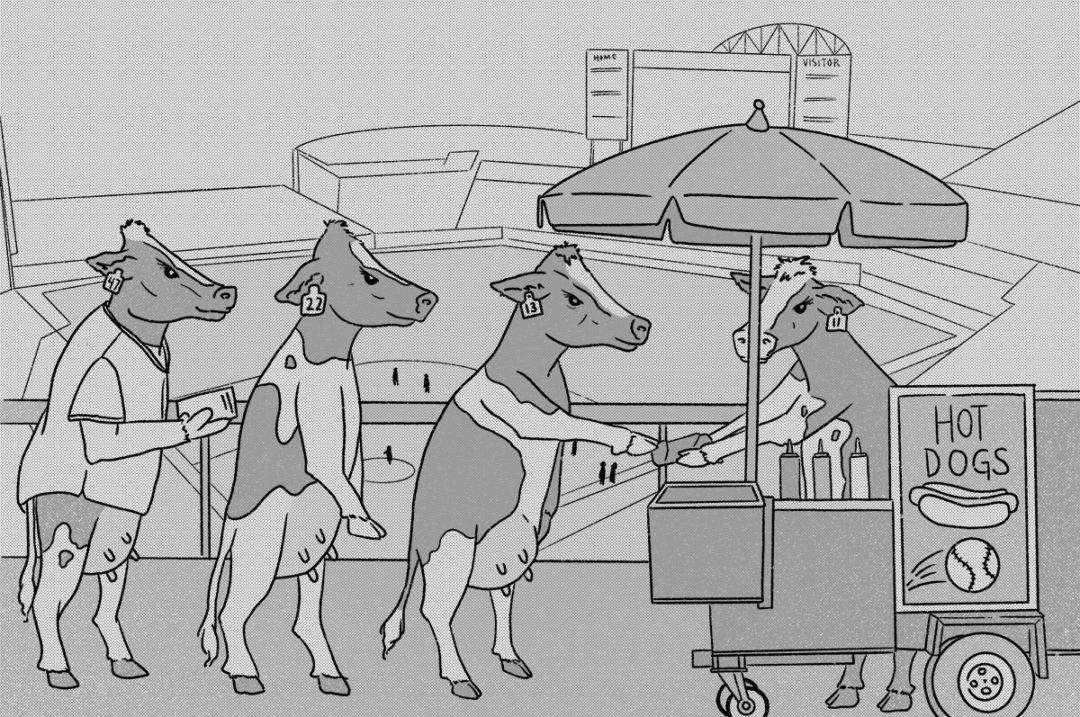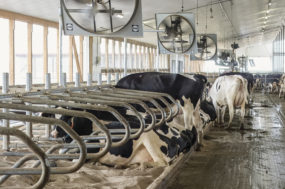Does baseball really have anything to do with robotic milking? For the fans at the ballpark, there are definite similarities. Have you ever gone to buy a beer or a hot dog during the seventh-inning stretch? Or do you stay in your seat to avoid the crowds and the lines at the concession stand like I do? The people who run the ballpark certainly want me to get out of my seat and spend money at the concession stand. It is an important part of the ballpark revenue – not to mention the tradition.
Whether your barn is guided-flow or free-flow cow traffic, cows wait for the robot like people wait at the concession stand. In either traffic system, they may wait in a freestall or they may wait in front of the robot, but they do wait. Just as the line at the concession stand depends on what is happening on the baseball field, the line at the robot depends on what is happening in the barn. Feedbunk management and cow comfort influence visits to the robot. In simple terms, if cows wait for feed or resting space now, they will probably wait for milking robots later in the day.
Feedbunk management is measured in many different ways. Keeping feed available 22 hours a day is a good place to start. Let’s be clear. If cows are reaching for pieces of corn cob, or even a big pile of corn cobs, feed is not available. Feeding for at least 3% refusal is another good guideline. Many operators and nutritionists agree that bunk refusals should be higher than 3% with robotic milking.
Feeding more than once per day can improve the consistency of feed availability and may allow for lower refusals. Automated feed pushers have gained popularity as a way to keep feed close to cows and remix sorted feed. Pushing up feed may not immediately bring cows to the bunk, but it will ensure a consistent meal when the cow does come to the bunk.
It really boils down to one question: Can the cow lying in the freestall be confident that she can quickly and efficiently get a full meal anytime she goes to the bunk? Will you leave your box seat behind the dugout to get a beer if you know there is a chance the beer will be warm, or the concession stand will be sold out?
Effective bunk management also influences meal size. If cows wait for feed, they will eat a larger meal when feed becomes available, and they will rest longer before they eat again. If all the cows come to the bunk at the same time, and all the cows eat a large meal at the same time, and all the cows take a long rest at the same time, then all the cows return to the robot at the same time. That slug flow does work in a parlor, but it does not make efficient use of robotic milking systems. Keep feed in front of cows so they eat frequent small meals to maximize dry matter intake and milking visits. If you come to the ballpark starving and have nachos supreme, two brats and a beer in the second inning, are you going back for peanuts in the fifth?
What about cow comfort? Won’t cows spend more time in a comfortable stall and less time at the robot? Not really. Cows prioritize lying time over eating time. If comfort or space is limited, they will go to a freestall to rest whenever there is an opportunity. They will eat later and the daily feed intake will be lower. If stalls are poorly designed or poorly maintained, cows will waste time standing or perching before they lie down. When they do lie down, they will rest longer before getting up to eat. Are you less likely to go get a hot dog if your seat is in the middle of the row and you have to make 20 people stand up to let you through?
Robot barns with one cow per freestall look like they are understocked because cows don’t all do the same thing at the same time. Most robotic dairy operators are convinced that the empty spaces in a robot barn are important, and they stock their barns at 100% to 110% of freestall capacity. A few operators are filling the empty space with higher stocking rates. Cow comfort is even more important in those barns. Every stall has to be comfortable all the time. Even those operators will reduce the stocking rate if, at any time of day, there are not enough empty stalls. If you get stuck in traffic and arrive at the ballpark after the first pitch, will you be a little less stressed knowing a seat has been reserved for you?
The bottom line is that milking visits, eating time and resting time are all related and all cyclical. A cow has to decide to get out of her freestall to be milked. The more she gets out of her freestall, the more she can be milked. Whether the barn is guided-flow or free-flow cow traffic, the desire for feed is the best motivation to get her out of her freestall. Frequent small meals will not only result in higher total dry matter intake, they will also provide more opportunities for milking. Cows that find stalls quickly and rest comfortably will come back to the feedbunk, and the milking robot, sooner than those that don’t. Effective bunk management and cow comfort strategies are critical to maintaining cow flow. Cows in your robot barn are like runners on base – ducks on the pond. Bunk management and cow comfort are the clean-up hitters that will drive them home to the robot. Play ball!







